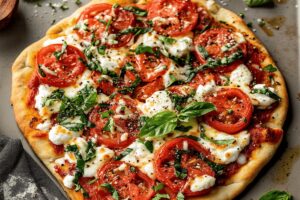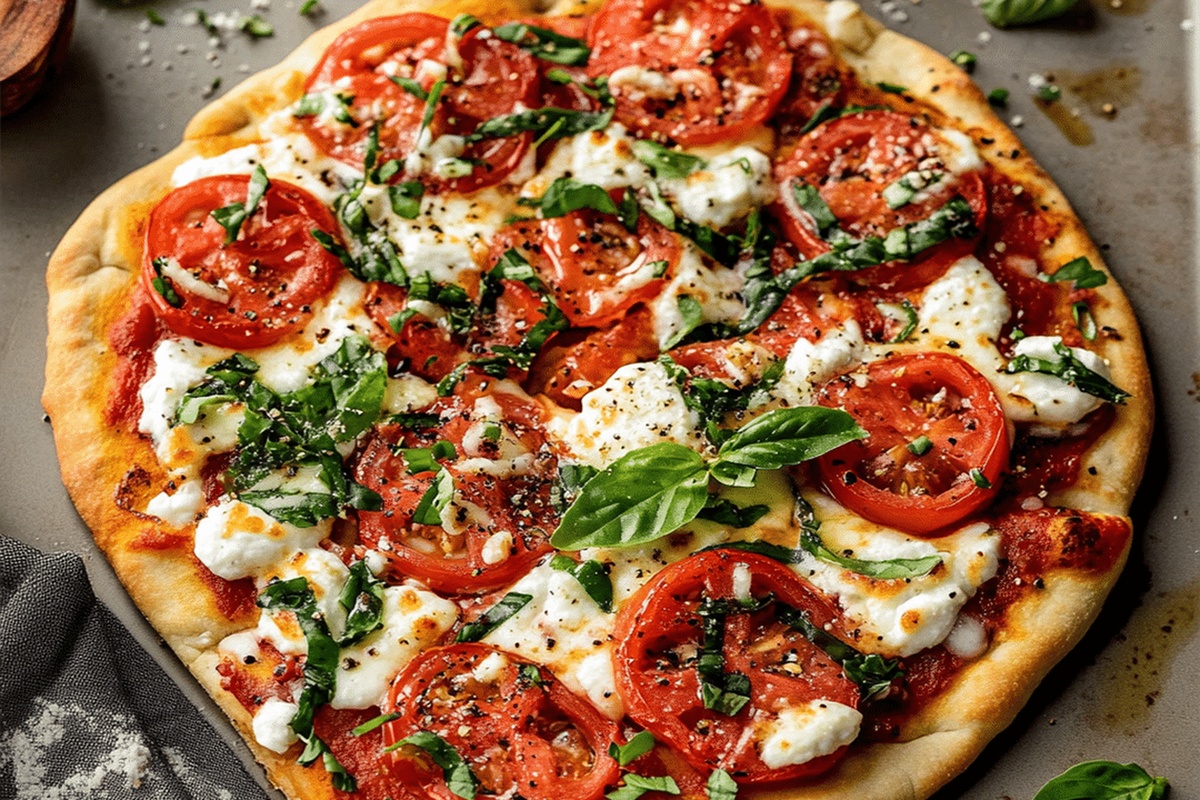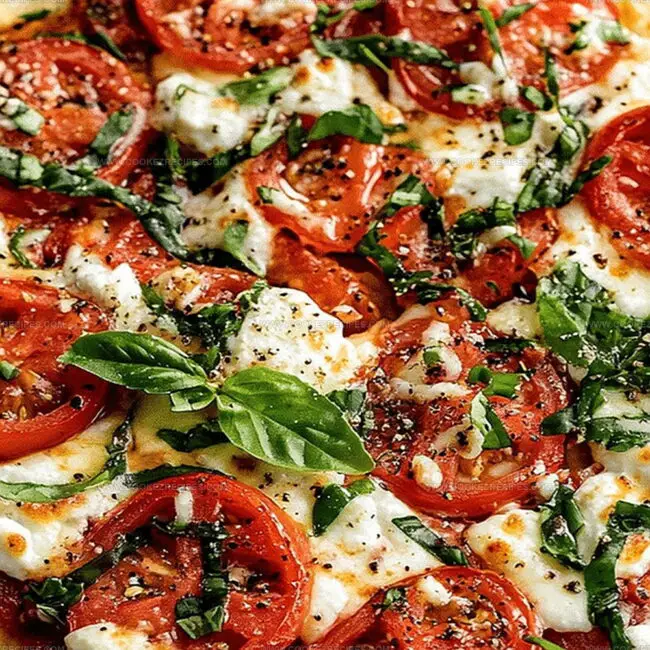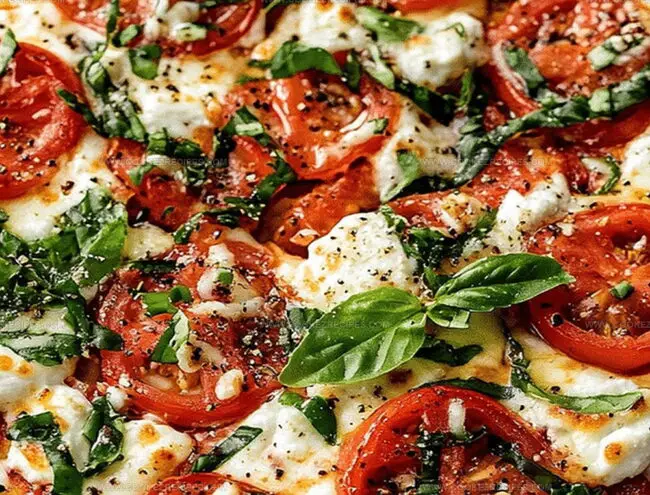Flatbread Pizza Recipe That’s Quick and Tasty
Crispy homemade flatbread pizza brings an unexpected twist to your weekend dinner routine.
Mediterranean culinary traditions inspire this simple yet delectable creation.
Kitchen experiments can lead to delightful surprises when you mix fresh ingredients with creativity.
Minimal effort produces maximum flavor in this uncomplicated dish.
Soft, pillowy dough serves as the perfect canvas for vibrant toppings that dance across its surface.
Colorful vegetables and aromatic herbs promise a meal that feels both comforting and exciting.
What Flatbread Pizza Offers In Speed And Crunch
Flatbread Pizza Dough and Topping Ingredients
Dough Base Ingredients:Optional Flavor Enhancers:Topping Considerations:Flatbread Pizza Making Guide
Step 1: Activate the Yeast
Grab a mixing bowl and combine yeast with sugar and warm water.
Let the mixture sit quietly for 5-10 minutes until it becomes wonderfully foamy and bubbly.
This magical moment means your yeast is alive and ready to create amazing pizza magic.
Step 2: Create Soft Dough
Add ingredients to the foamy yeast mixture:Mix everything until a soft, slightly sticky dough emerges.
The texture should feel smooth and promising.
Step 3: Develop Dough Strength
Knead the dough using your hands or a dough hook for 6-8 minutes.
Add tiny amounts of flour if the dough feels too sticky.
Check dough readiness by stretching a small piece – if it becomes thin like a transparent membrane without breaking, it’s perfect.
Step 4: Allow Dough to Rise
Place the dough in a lightly greased bowl.
Cover with a clean kitchen towel and let it rest at room temperature.
Watch it magically expand and double in size over 45 minutes.
Step 5: Prepare Pizza Canvas
Heat the oven to 475°F.
Gently deflate the risen dough and divide into two portions.
Roll each piece into a thin, even flatbread about 1/4 inch thick.
Transfer carefully to a baking sheet or pizza stone.
Step 6: Add Playful Touches
Poke small holes across the dough surface with fingertips or a fork.
Brush generously with olive oil.
Sprinkle on your favorite toppings, letting creativity guide you.
Step 7: Bake to Perfection
Slide the pizza into the hot oven.
Bake for 15-20 minutes until the crust turns golden brown and toppings become deliciously crispy.
Remove, slice, and serve immediately while warm and inviting.
Pizza Tips That Improve Flatbread Bases
Quick Storage Tips for Flatbread Pizza
Crisp Matches For Flatbread Pizza
Savor Mediterranean Magic: Perfect Pairings for Flatbread Pizza
Flatbread Pizza in Fun Styles
FAQs
Check the expiration date on the package. If unsure, test by mixing yeast with warm water and sugar. If it becomes foamy and bubbly within 5-10 minutes, it’s active and ready to use.
Stretch a small piece of dough between your fingers. If it stretches thin enough to see light through without tearing, the gluten is well-developed and the dough is ready.
Yes, you can prepare the dough and let it rise slowly in the refrigerator overnight. Remove it 30 minutes before shaping to let it come to room temperature.
Poking holes prevents the dough from bubbling up during baking and helps create a more even, crispy crust. It allows steam to escape and ensures uniform cooking.
Print
Flatbread Pizza Recipe
- Total Time: 1 hour 10 minutes
- Yield: 2 1x
Description
Mediterranean flatbread pizza brings rustic Italian charm to your dinner table with crispy crust and zesty toppings. Fresh herbs and melted cheese create a perfect balance of flavors that will transport your palate to sunny coastal landscapes.
Ingredients
Main Ingredients:
- 2 cups (250g) all-purpose flour or bread flour
- 3/4 cup (180 milliliters) warm water
- 1 tablespoon (15 milliliters) olive oil
Yeast and Sweetener:
- 1 teaspoon active dry or instant yeast
- 1 teaspoon granulated sugar
Seasonings and Additional Ingredients:
- 1 teaspoon salt
- 2 teaspoons olive oil (for brushing)
Optional Seasonings:
- 1 teaspoon garlic powder
- 1 clove minced garlic
- 1 teaspoon Italian seasoning
Instructions
- Activate the yeast by combining it with sugar and warm water in a mixing vessel. Allow the mixture to rest, developing a frothy texture that indicates active fermentation.
- Incorporate flour, olive oil, and salt into the yeast mixture. Blend the ingredients until a cohesive, slightly tacky dough emerges, ensuring all components are thoroughly integrated.
- Develop the dough’s gluten structure through vigorous kneading, either manually or using a stand mixer with a dough hook. Continue working the dough for 6-8 minutes, gradually adding flour to maintain an optimal texture.
- Evaluate the dough’s readiness by performing the windowpane test, stretching a small piece to check for translucent elasticity without tearing.
- Transfer the prepared dough to a lightly greased container, covering it to prevent moisture loss. Allow the dough to rise at ambient temperature, developing flavor and volume for approximately 45 minutes.
- Preheat the oven to a high temperature of 475°F, creating an ideal environment for crisp, golden flatbread.
- Deflate the risen dough and divide it into two equal portions. Roll each section into a thin, uniform flatbread approximately 1/4 inch thick.
- Carefully transfer the shaped dough to a lined baking sheet or preheated pizza stone, creating a foundation for your toppings.
- Prepare the surface by gently puncturing the dough with fingertips or a fork, preventing excessive bubbling during baking.
- Brush the flatbread with olive oil to enhance flavor and promote even browning. Distribute your chosen toppings across the surface with creativity and balance.
- Bake the flatbread pizza for 15-20 minutes, monitoring the crust’s golden-brown color and the toppings’ caramelization.
- Remove from the oven, allow to cool briefly, then slice and serve while warm, savoring the crisp texture and vibrant flavors.
Notes
- Experiment with alternative flour types like whole wheat, spelt, or gluten-free blends to accommodate dietary restrictions and add unique flavor profiles.
- Activate yeast precisely by ensuring water temperature is between 100-110°F, which creates optimal conditions for fermentation without killing the microorganisms.
- Develop deeper flavor complexity by incorporating herbs like rosemary, thyme, or basil directly into the dough mixture during the initial mixing stage.
- Enhance crispy texture by preheating a pizza stone or using a cast-iron skillet, which helps create a perfectly golden and crunchy bottom crust.
- Prep Time: 55 minutes
- Cook Time: 15 minutes
- Category: Lunch, Dinner, Snacks
- Method: Baking
- Cuisine: Italian
Nutrition
- Serving Size: 2
- Calories: 285
- Sugar: 1 g
- Sodium: 360 mg
- Fat: 7 g
- Saturated Fat: 1 g
- Unsaturated Fat: 6 g
- Trans Fat: 0 g
- Carbohydrates: 51 g
- Fiber: 2 g
- Protein: 8 g
- Cholesterol: 0 mg




Daniel Bruns
Founder & Culinary Innovator
Expertise
Recipe development for home cooks, Nutritional analysis and meal planning, Culinary education and food writing
Education
Auguste Escoffier School of Culinary Arts
Diploma in Culinary Arts and Operations
Focus: Classical and contemporary cooking techniques, Culinary entrepreneurship and kitchen management, Menu development and food cost analysis
Daniel’s story started with flour on his face and a pie in the oven at his grandma’s house. He later sharpened his skills at the Auguste Escoffier School of Culinary Arts.
His goal? Recipes so simple you’ll want to cook every night. When he’s not whipping up one-pan wonders, Daniel’s outside picking herbs, hosting neighborhood cook-offs, or baking chocolate cakes with his kids, messy, sweet, and unforgettable.